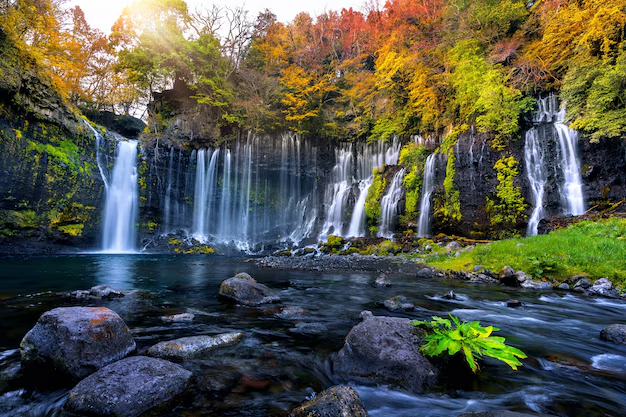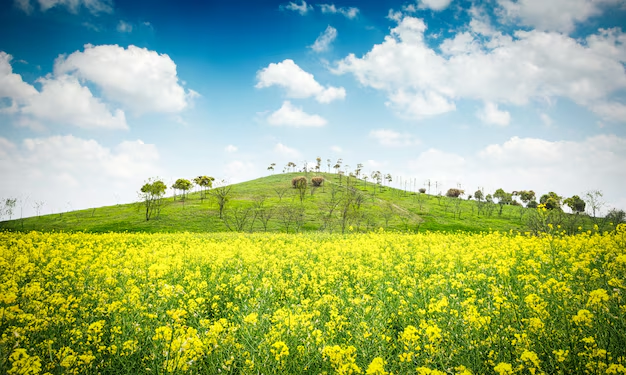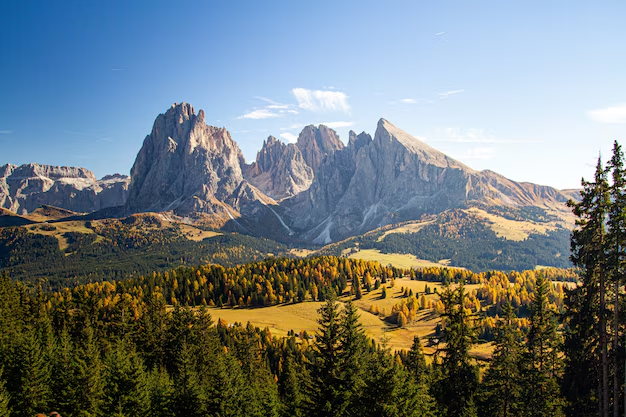Nature is more than just a backdrop to our lives. It’s a living, breathing symphony that constantly plays a melody of sights, sounds, and movements. A walk through the wild is like stepping into the heart of an orchestra, where every sound and every movement contributes to the harmony of the natural world. From the chirping of birds to the rustling of leaves, from the roar of waterfalls to the whisper of the wind, nature’s symphony is a testament to the complex and beautiful balance that sustains life on Earth.
The Orchestra of Nature
Imagine standing in the midst of a forest at dawn. The first light of day filters through the trees, casting long shadows and bathing the leaves in golden hues. As you listen, the air is filled with the soft melody of birdsong. A woodpecker taps rhythmically on a nearby tree, while a breeze flows through the branches, producing a gentle rustling sound. Farther off, a river murmurs as it winds its way through the landscape, while the croak of a distant frog punctuates the melody. This is nature’s orchestra—a grand symphony with every element playing its part.
The rhythm of nature is shaped by countless organisms, from the tiniest insect to the largest mammal. The hum of bees collecting nectar, the chirps of crickets at dusk, and the songs of whales echoing beneath the ocean’s surface are all part of this intricate composition. Each sound and each movement plays an important role in the delicate balance of ecosystems, ensuring the survival of plants, animals, and even humans.
The Wind and the Trees
The wind, often considered the conductor of this symphony, directs the tempo and flow of the natural world. It carries the scent of flowers, spreads seeds to new locations, and allows the leaves of trees to dance in the breeze. In a forest, the trees sway to the rhythm of the wind, their branches moving in graceful synchrony. The sound of leaves rustling in the wind creates a soft, soothing backdrop that blends seamlessly with the birdcalls and the chirps of insects.
This delicate dance between wind and trees is vital for the ecosystem. Trees, through the process of photosynthesis, provide oxygen, support wildlife, and prevent soil erosion. In return, they rely on the wind to disperse seeds and pollen, allowing new life to grow and thrive. The harmony between these elements showcases the interconnectedness of nature, where each note supports the others, creating a symphony that is more than just beautiful—it’s essential for survival.
The Call of the Wild
As you journey deeper into the wilderness, the sounds of nature become even more varied. The forest’s orchestra expands to include the call of wolves, the roar of lions, or the trumpeting of elephants. These calls are more than just sounds; they are messages. Wolves communicate with each other through howls, marking territory and coordinating their movements. Elephants, known for their complex social structures, communicate over vast distances using low-frequency sounds that travel through the ground.
The call of the wild, whether it’s the roar of a lion or the song of a humpback whale, is an integral part of the wild symphony. It’s a reminder of the importance of wildlife in maintaining the harmony of the natural world. Each species contributes its own unique sound, and together, they form a chorus that echoes across the Earth.
Rivers and Waterfalls: The Pulse of the Earth
Water is a central theme in nature’s symphony, providing both rhythm and melody. The steady flow of rivers creates a constant pulse, much like the beating heart of the Earth. Waterfalls, with their thunderous roar, add a dramatic crescendo to the composition, while streams create a soft, calming background music.
Rivers play a crucial role in shaping landscapes, nourishing plants, and providing water for animals and humans alike. Their sounds are not just part of the symphony of nature—they are the lifeblood of ecosystems, ensuring that all living things have the resources they need to survive.
Nightfall: The Symphony Under the Moon
As the day turns to night, the symphony of nature shifts. The melodies of daytime creatures fade, and a new set of performers takes the stage. The chirping of crickets, the hoot of owls, and the rustling of nocturnal creatures create a soft, haunting melody that is distinct from the daytime sounds.
Night is when nature’s rhythm slows down, and the quieter, more introspective elements of the wild emerge. The soundscape becomes more subtle, inviting listeners to reflect on the deeper, often hidden, aspects of life in the wild. Whether it’s the distant call of a nightjar or the soft swish of a deer moving through the underbrush, the night reveals a quieter but equally beautiful symphony of sounds.
7 Frequently Asked Questions About Nature’s Symphony
1. What is the symphony of nature?
The symphony of nature refers to the harmonious sounds and rhythms produced by the natural world, including animals, plants, wind, water, and the environment. These elements all contribute to a balanced ecosystem.
2. How do animals communicate in nature?
Animals communicate in various ways, including vocalizations, body language, and scents. Sounds such as bird songs, wolf howls, and elephant trumpets serve as communication tools for mating, territory marking, or social interaction.
3. Why is the sound of nature important?
The sounds of nature provide important ecological functions, such as signaling danger, attracting mates, and marking territories. They also have psychological and physical benefits for humans, promoting relaxation and reducing stress.
4. How does nature’s rhythm impact ecosystems?
The rhythm of nature, like the cycle of day and night or the flow of water, helps regulate ecosystems. It ensures that plants and animals thrive, and that energy, water, and nutrients are distributed evenly across the environment.
5. Can the symphony of nature be disturbed by humans?
Yes, human activities like pollution, deforestation, and urbanization can disrupt the natural soundscape and rhythms of ecosystems. This can lead to habitat loss, species decline, and imbalance in ecological functions.
6. What role do trees play in the symphony of nature?
Trees contribute to the natural symphony by providing shelter, producing oxygen, and offering food for wildlife. Their rustling leaves and sway in the wind add important sounds to the ecosystem’s soundtrack.
7. How can we protect the symphony of nature?
Protecting natural habitats, reducing noise pollution, and supporting conservation efforts are crucial to preserving the natural sounds and rhythms of the wild.
Conclusion
Nature’s symphony is a powerful reminder of the interconnectedness of all living things. From the wind in the trees to the calls of wild animals, every sound plays an essential role in maintaining the balance of the ecosystem. As we journey through the wild, we are reminded of the beauty and complexity of nature’s melody, which is a reflection of the planet’s resilience, harmony, and life-sustaining power. By listening to nature’s symphony, we become more attuned to the delicate balance that supports life on Earth, inspiring us to protect and cherish the natural world for generations to come.
Key Takeaways
- Nature’s symphony is the harmonious interplay of sounds created by plants, animals, wind, and water.
- Each element in nature, from the smallest insect to the largest mammal, plays an important role in this grand orchestra.
- The rhythm of nature helps maintain ecological balance, providing the resources and environment necessary for life.
- Protecting the natural world from pollution and habitat destruction is essential for preserving the symphony of nature.
- By experiencing the wild, we become more aware of the deep connection we share with the Earth and its ecosystems.




